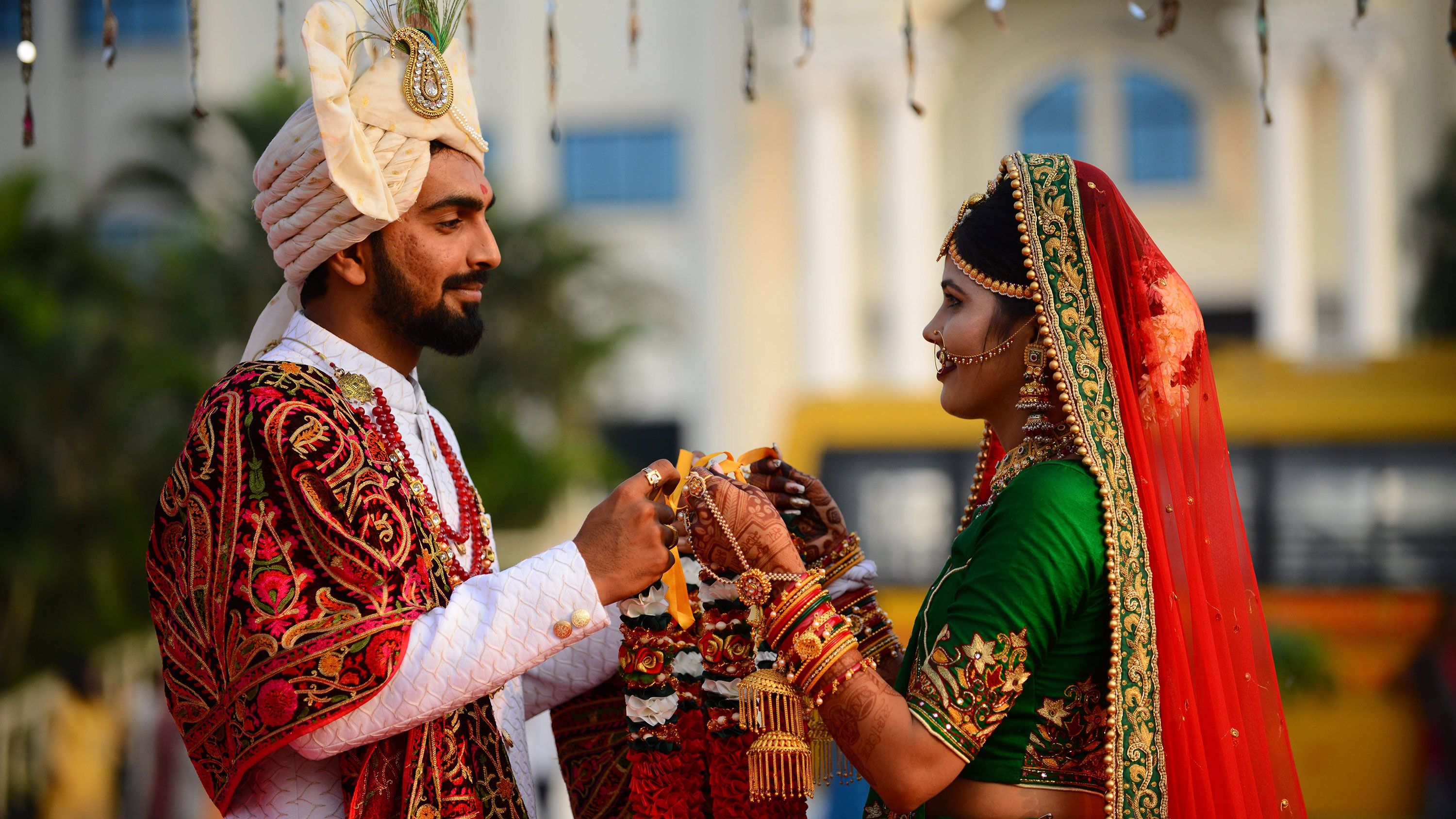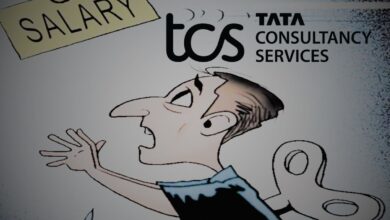The Great Indian Marriage Meltdown – High Expectations, Low Pay, And A Culture In Crisis In 2025

Marriage in India has long been considered a sacred institution, a lifelong commitment woven into the fabric of culture and tradition. Yet, in 2025, an unsettling trend is emerging, one that suggests India is undergoing a dramatic shift in its views on marriage.
Increasingly, young Indians are questioning whether tying the knot is worth the financial and emotional burden it entails. The culprit for this growing notion is perhaps a combination of sky-high expectations from women and the harsh economic realities faced by men.

The Rise of Singlehood, A Growing Trend
With increasing financial burdens, shifting gender roles, and legal complexities in marriage, a growing number of Indian youth are choosing to remain single.
The National Statistics Office’s Youth in India Report 2022 found that 23% of young Indians aged 15–29 are not interested in marriage, up from 17.2% in previous years. The declining rate of early marriages reflects a significant cultural shift. The percentage of women married by the age of 20 has dropped from 72.4% in 2005-06 to 52.8% in 2019-21.
Education is another key factor influencing marriage trends. The median age of marriage for women with no formal schooling remains significantly lower than for those who have completed 12 or more years of education. Women with higher education are more likely to delay marriage, pursue careers, and seek financial independence before committing to family life.
The Growing Numbers
Further, illustrating the trend, a staggering 42% of young Indians between the ages of 26 and 40 now say they do not want to get married. It is crucial to not think of it as a passing trend, because it is a profound societal shift. One major reason cited is financial pressure. Marriage no longer represents stability and companionship; for many men, it symbolizes crushing economic responsibility.
To put it into perspective – to be among India’s top 10% of earners, a person needs to make just ₹25,000 per month. And yet, only 3% of Indians earn ₹2 lakh or more per month. When women set financial expectations for potential spouses that align with the top 0.01% of earners, it begs the question – who exactly are they hoping to marry?
Hence, the reality is that India’s economic structure simply does not support these expectations for the vast majority of men.

The Financial Burden on Men, A Breaking Point?
Traditional gender roles still dictate that men should be the primary earners in a household. However, a Hindustan Times report states that 47% of Indian women quit their jobs after marriage and having children. This means that, in almost half of all Indian marriages, men are left carrying the entire financial burden.
Meanwhile, inflation is rising, job opportunities are shrinking, and salaries are stagnating. The Indian middle class, once seen as the backbone of the country’s economic growth, is struggling to keep up with the increasing cost of living. The impact of these financial pressures is becoming increasingly visible in marriage trends.
A Surge in Divorce Rates, A Symptom of a Broken System?
The idea that Indian marriages last a lifetime is quickly becoming outdated. In fact, India’s divorce rate has increased by 50-60% in the last decade alone. Cities like Delhi, Mumbai, and Bengaluru have divorce rates exceeding 30%, and court dockets are filled with bitter alimony battles.
In some high-profile cases, alimony claims have reached hundreds of crores, involving entire families in drawn-out legal fights. One case saw a wife demand ₹500 crores from her US-based husband. In another, the Supreme Court had to settle an alimony case for ₹12 crores. With such cases making headlines, it’s no wonder young men are increasingly wary of marriage.
Fear of Marriage. A Legal and Cultural Dilemma
Beyond financial expectations, there is also a growing fear of false legal accusations. Many men worry that even minor disputes could escalate into lengthy legal battles, causing significant financial losses. This fear is particularly prevalent in urban areas, where divorce rates have tripled in the last few years.
The 2023 Morgan Stanley report predicts that by 2030, 50% of Indian women aged 25 to 44 will either remain single or choose not to have children. This suggests that India is on the brink of a cultural transformation – one where marriage, once seen as essential, may become an option only for a select few.

The Enduring Popularity of Arranged Marriages
Even today, arranged marriages remain the dominant form of union in India, with nearly 90% of marriages still following this traditional system. Families rely on middlemen, matchmaking websites, and community networks to find suitable partners, ensuring compatibility in education, social status, and financial standing. However, while arranged marriages have long been viewed as a stable foundation for Indian families, they are not without significant challenges.
Financial expectations, dowry discussions, and social pressures add immense strain to the process. The cost of weddings, lifestyle expectations, and the growing importance of financial security have made it increasingly difficult for families to find suitable matches. The traditional institution, once a cornerstone of Indian society, is now facing mounting pressure in the face of modern realities.
Family Pressure and Domestic Conflicts
Irrespective of the growing trend (not to marry), in many arranged marriages, beyond financial burdens, family dynamics play a major role in shaping the success or failure of marriages. The bride, often expected to leave her home and adjust to a new family, is burdened with high expectations. Despite being educated and career-oriented, many women are still expected to take full responsibility for household duties, childcare, and maintaining family harmony.
Mother-in-law interference, patriarchal traditions, and resistance to modern gender roles create additional stress. A newlywed couple’s privacy and independence are often compromised by joint family living arrangements. With such pressures, even marriages that start with great promise can become fraught with conflict.
Are Love Marriages Any Different?
Love marriages, often perceived as an escape from the rigidity of arranged setups, are not immune to similar struggles. While emotional compatibility may be stronger, financial disparities, career priorities, and family expectations can still cause fractures. Many couples in love marriages lack the same level of financial and familial vetting that arranged marriages undergo, leading to unexpected conflicts post-marriage.
Additionally, living in joint families remains a significant challenge, particularly when it comes to intimacy and personal space. Couples who struggle to maintain a private relationship often face growing resentment, which can escalate into long-term dissatisfaction and divorce.
The Future of Marriage in India
As economic instability, gender expectations, and legal complexities continue to shape India’s marital space, more young people are questioning the value of marriage. Rising divorce rates, legal disputes, and the financial responsibilities associated with marriage are leading many to view singlehood as a more practical choice.
While marriage remains an important institution in India, its dynamics are shifting. Whether arranged or love-based, modern marriages require a balance of financial compatibility, emotional maturity, and personal freedom. Without addressing these fundamental issues, the institution of marriage will continue to lose its appeal among India’s younger generations.
![How to Get a Single Status Certificate in India [Unmarried Certificate]](https://hrdattestation.in/wp-content/uploads/schema-and-structured-data-for-wp/single-status-certificate-2-1200x675.jpg)
The Last Bit, Is India Ready for a Cultural Shift?
At the heart of this crisis is a fundamental question: Has the institution of marriage in India become financially unsustainable for the average person? The answer seems to be a resounding yes. The combination of unrealistic expectations, economic struggles, and an unpredictable legal system has made many young Indians rethink whether marriage is worth the risk.
If these trends continue, India may soon look very different. Traditional marriage rates could decline sharply, family structures could evolve, and a growing number of individuals may choose independence over commitment. The Indian marriage system is at a crossroads – will it adapt, or will it crumble under the weight of modern financial realities?




